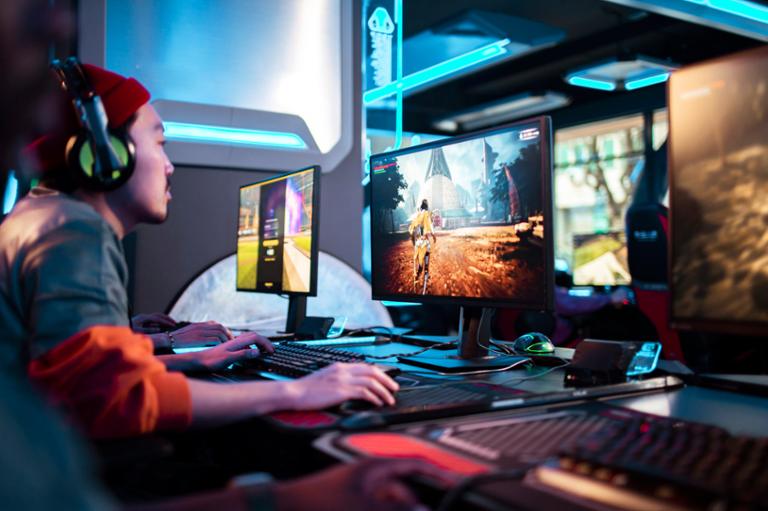Notifications

8 minutes, 44 seconds
-13 Views 0 Comments 0 Likes 0 Reviews

Imagine a high school biology class where students explore the human body by walking through a virtual bloodstream. Or a history lesson where learners time-travel to Ancient Rome to witness Julius Caesar’s final speech. This isn’t science fiction, it's the new frontier of learning, powered by education-focused metaverse game worlds.
As traditional education struggles to keep up with digital-native students, educators and developers across the U.S. are turning to immersive platforms for help. By blending the principles of gaming with immersive learning, these virtual worlds are reshaping what it means to be a student and a teacher. And behind it all is a new wave of metaverse game development solutions pushing the boundaries of what's possible.
Classrooms have changed, but not fast enough. While smartboards and online quizzes are upgrades, they still fall short in engaging today’s tech-savvy students. The rise of remote learning has exposed deeper challenges: lack of interactivity, low retention, and high dropout rates.
This is where metaverse game worlds shine. They bring abstract concepts to life, foster collaboration in 3D environments, and encourage curiosity through exploration. Instead of being passive receivers of information, students become active participants in their own education journey. It’s not just about learning, it's about experiencing knowledge.
These are immersive, multiplayer digital environments designed specifically for learning. Think of them as Minecraft-meets-MIT, where players explore, build, and interact with educational content through gamified systems.
Whether it’s a virtual chemistry lab, a 3D language immersion game, or a digital twin of the solar system, these worlds are designed by educators, game developers, and UX designers working together. The core idea is to make education fun, memorable, and accessible while leveraging powerful metaverse game development solutions to build and scale these experiences.
 Real-World Applications: U.S. Classrooms Leading
Real-World Applications: U.S. Classrooms Leading Across the U.S., a growing number of schools and districts are piloting metaverse platforms in K–12 and higher education. For example, students in New York are using VR history simulations to reenact pivotal moments in American history, while Texas classrooms test STEM-based VR platforms that allow students to conduct complex science experiments in a virtual lab.
Higher education isn’t far behind. Universities like Arizona State and Stanford are exploring how metaverse-enabled classes can improve online learning engagement. Through 3D campus tours, virtual lectures, and interactive assignments, students aren’t just logging into Zoom, they're stepping into a fully interactive educational universe.
What makes game-based metaverse learning so effective? It comes down to psychology. Games naturally encourage problem-solving, reward effort, and provide real-time feedback. These are also core principles in effective education.
By integrating mechanics like progress tracking, level-ups, team quests, and narrative-driven missions, students stay motivated and invested in the content. When a student "completes a quest" by solving a math problem or working through a coding module, they’re not just learning, they're leveling up in real life.

None of this magic happens without robust technology. Behind every virtual lab or gamified world is a team of developers using advanced metaverse game development solutions to bring it all together. These platforms use engines like Unity and Unreal Engine 5 to render immersive environments, often hosted on cloud infrastructure that supports multiplayer experiences in real time.
Moreover, many development teams now focus on cross-platform compatibility, ensuring students can access these educational worlds via VR headsets, tablets, or standard laptops. With scalability in mind, these solutions also allow educators to customize content, track student data, and integrate with traditional Learning Management Systems (LMS).
While the promise is exciting, there are still hurdles to clear. Access to reliable internet, updated hardware, and VR headsets is uneven across U.S. school districts. For low-income and rural communities, this digital divide poses a real threat to equitable adoption.
There’s also the question of data privacy and screen time. Developers and educators must work together to ensure these platforms prioritize safety, balance screen usage, and avoid exploitative mechanics like pay-to-play features. As we enter this new era, ethics must be as carefully designed as the environments themselves.
One of the metaverse's most promising aspects is its ability to transcend physical limitations. Students with mobility challenges, learning disabilities, or social anxiety can thrive in environments where they control their pace, appearance, and interactions.
U.S.-based developers are leading the charge in creating inclusive design standards. Avatars that reflect all races, genders, and abilities; audio-guided navigation; and color-blind friendly interfaces are just a few features being built into next-gen educational metaverse game development solutions. The goal is simple: make learning joyful and accessible for everyone.
 Looking Ahead: The Metaverse as a Core Curriculum Tool
Looking Ahead: The Metaverse as a Core Curriculum ToolIn the next five years, we could see metaverse platforms embedded into public school curricula across the U.S. As state governments begin funding digital education tools, partnerships between school districts and game development studios are likely to increase.
The future might include national networks of education-focused metaverse hubs where students from across states collaborate, compete, and create together. Imagine a national spelling bee held in a virtual arena or collaborative science fairs inside a digital city. The possibilities are only limited by imagination and the development tools available.
The education system in the U.S. is overdue for a revolution, and the metaverse might be the game-changer we’ve been waiting for. With the right vision, funding, and tech expertise, we can unlock an era where learning is immersive, inclusive, and deeply personalized.
Thanks to powerful metaverse game development solutions, educators can finally deliver experiences that captivate rather than bore. And as game-based learning becomes mainstream, students everywhere will benefit from this shift not just in grades, but in how they see the world. And for fans tracking game news like the Persona 5 the phantom x release date Xbox, it’s clear the line between gaming and learning is thinner than ever. The same innovation powering blockbuster RPGs is now transforming the way we teach, learn, and grow.
metaverse game development solution metaverse game development services metaverse game development company
